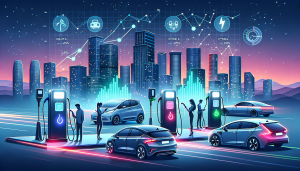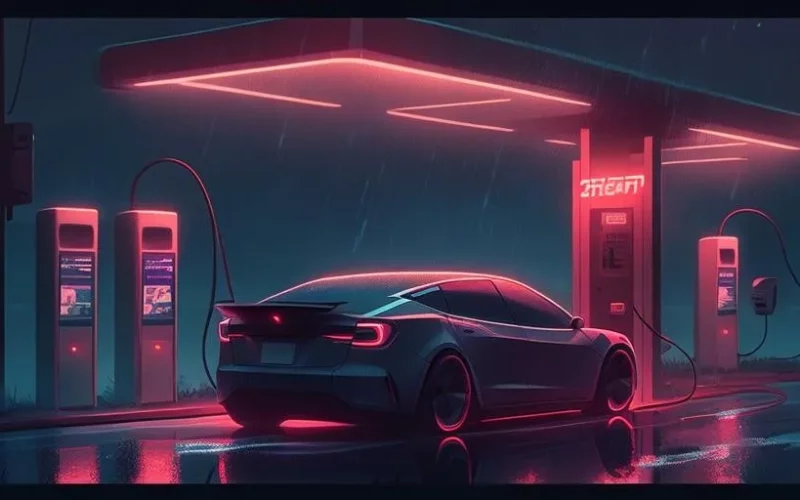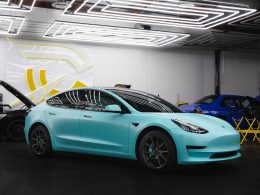Introduction
In today’s rapidly evolving technological landscape, the integration of 5G technology is revolutionizing various industries, and the automotive sector is no exception. The convergence of connected vehicles and 5G technology holds immense promise, ushering in a new era of safer, more efficient, and smarter transportation systems. This article explores the pivotal role of 5G in advancing connected vehicles and its transformative impact on the future of mobility.
The Foundation of Connected Vehicles
Connected vehicles encompass a spectrum of innovations, from autonomous driving capabilities to real-time data connectivity. These vehicles leverage a myriad of sensors, cameras, and communication technologies to interact with their surroundings, other vehicles, and infrastructure. However, the full potential of connected vehicles can only be realized through robust, high-speed, and reliable connectivity—a void that 5G technology aims to fill.
Unleashing the Power of 5G
The advent of 5G networks signifies a significant leap forward in communication technology. With substantially higher data transfer speeds, lower latency, and enhanced network capacity compared to its predecessors, 5G is a game-changer for connected vehicles.
Ultra-Low Latency
5G’s ultra-low latency, often in the range of milliseconds, is pivotal for real-time communication between vehicles and their surroundings. This instantaneous data exchange is critical for enabling split-second decisions in autonomous vehicles and enhancing driver-assistance systems, thereby elevating safety standards on the roads.
High Bandwidth
The increased bandwidth of 5G networks enables seamless transmission of large volumes of data. This capability facilitates high-definition mapping, streaming of immersive entertainment content for passengers, and the transfer of substantial data for vehicle-to-everything (V2X) communication, including vehicle-to-vehicle (V2V) and vehicle-to-infrastructure (V2I) interactions.
Reliability
5G technology’s reliability ensures consistent connectivity, even in highly dense urban environments or areas with network congestion. This reliability is crucial for connected vehicles to maintain continuous communication, enabling them to make informed decisions based on real-time data without interruptions.

Transformative Applications
The integration of 5G technology with connected vehicles opens up a multitude of transformative applications and benefits:
Enhanced Safety
Collision Avoidance Systems: Instantaneous communication between vehicles enables the implementation of advanced collision avoidance systems, mitigating accidents and saving lives.
Traffic Management: Dynamic traffic management systems, empowered by real-time data from interconnected vehicles, optimize traffic flow and reduce congestion.
Autonomous Driving
Precise Localization: 5G’s low latency and high accuracy localization capabilities are fundamental for the precise positioning required in autonomous driving, enhancing navigation and safety.
Data-Intensive Algorithms: The robust bandwidth of 5G supports the deployment of complex AI algorithms that analyze vast amounts of data collected by vehicles, improving decision-making in self-driving cars.
Passenger Experience
Immersive Entertainment: High-speed 5G connectivity within vehicles enables immersive entertainment experiences for passengers, such as high-definition streaming and augmented reality applications.
Productivity on the Go: Reliable connectivity fosters remote work capabilities, transforming vehicles into mobile offices for professionals.
Challenges and Future Outlook
Despite its promise, the widespread integration of 5G technology in connected vehicles faces certain challenges. Infrastructure development, regulatory frameworks, data security, and interoperability issues are among the hurdles that need to be addressed for seamless adoption. Looking ahead, continued advancements in 5G infrastructure, coupled with collaborative efforts between automotive manufacturers, telecommunication companies, and policymakers, will drive the realization of a fully connected and autonomous vehicular ecosystem. Moreover, as 5G technology evolves, leveraging its potential through ongoing research and innovation will unlock new possibilities, further enhancing the efficiency, safety, and convenience of connected vehicles.

Conclusion
The marriage of 5G technology and connected vehicles represents a transformative synergy that has the potential to redefine mobility. With its unparalleled speed, low latency, and reliability, 5G is paving the way for safer roads, efficient transportation systems, and unparalleled user experiences within vehicles. As these technologies continue to evolve, their convergence will undoubtedly shape the future of transportation, bringing us closer to a smarter and more interconnected world on wheels.












